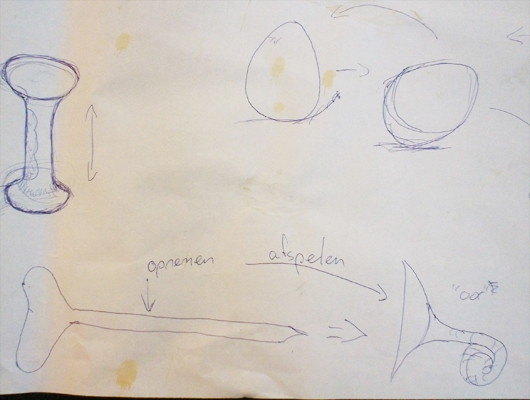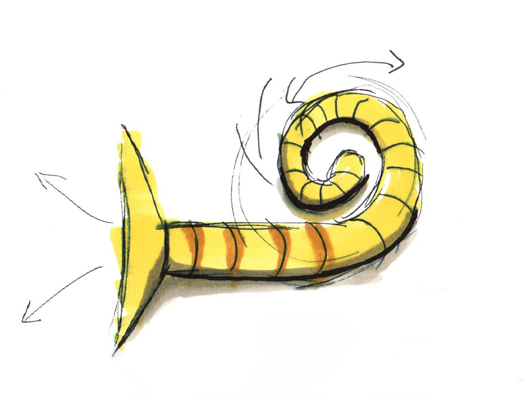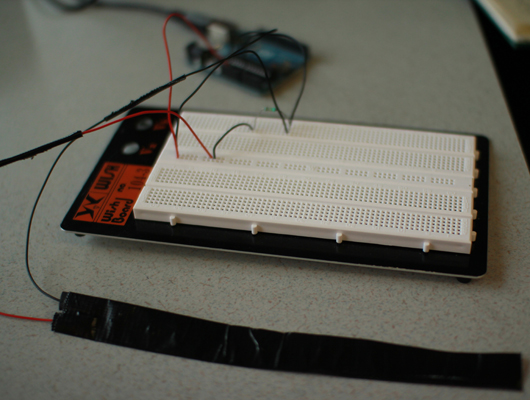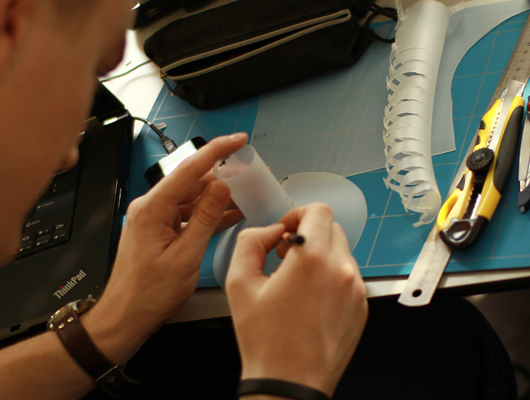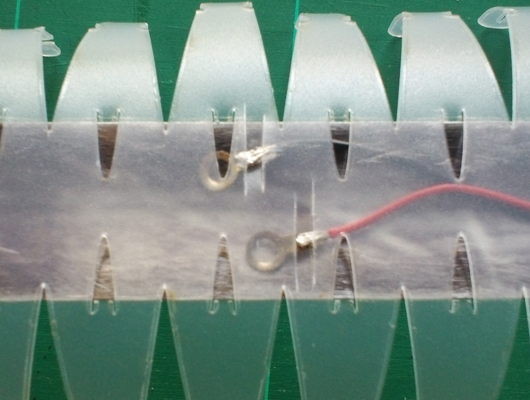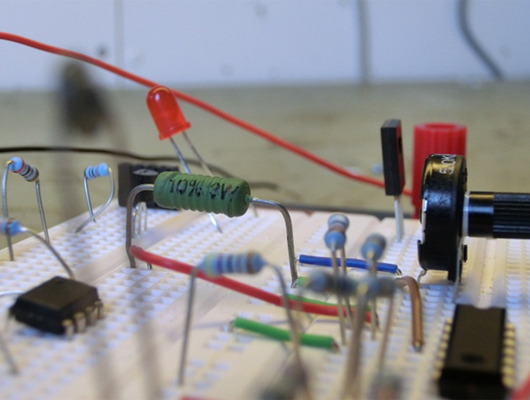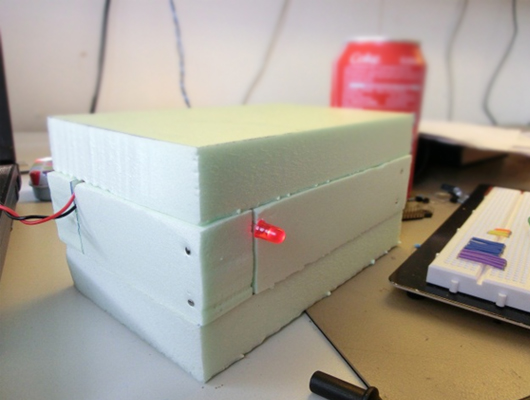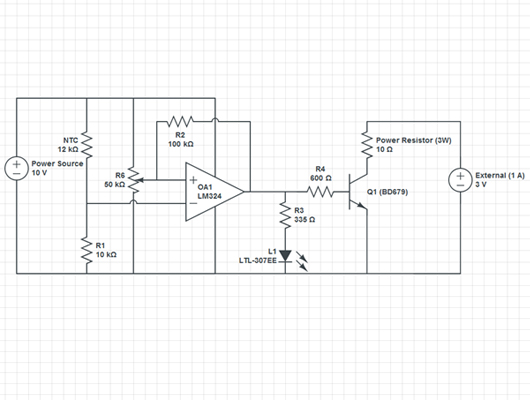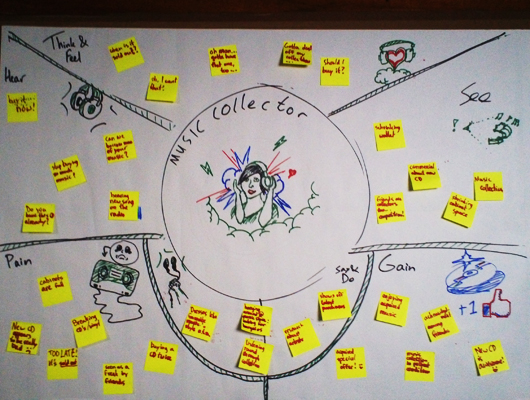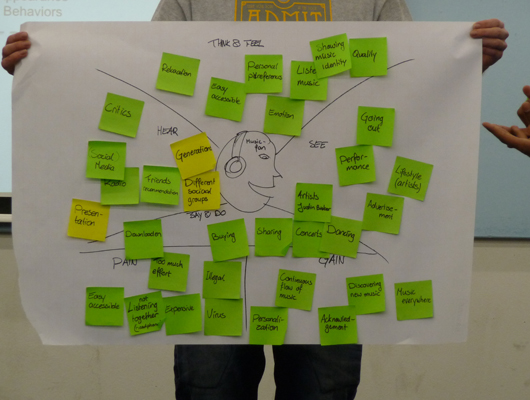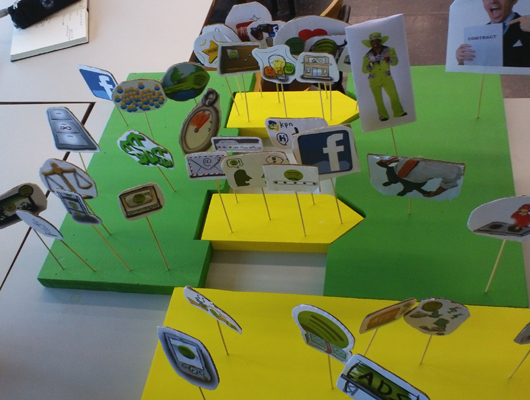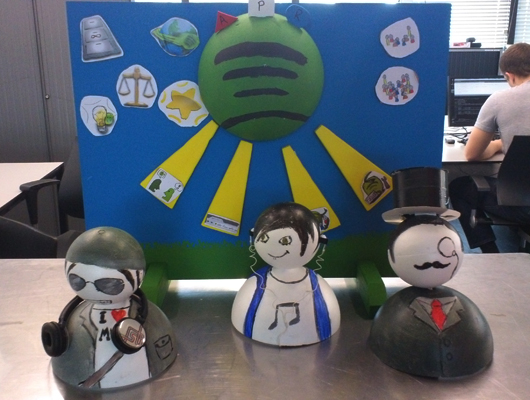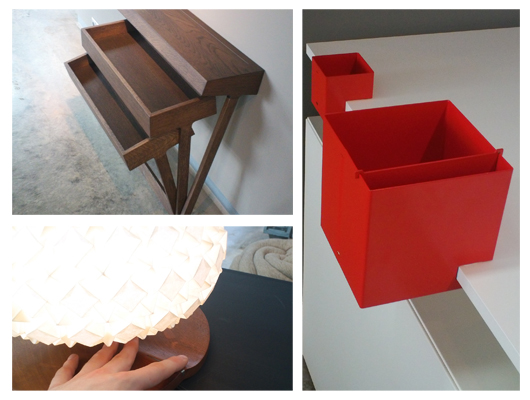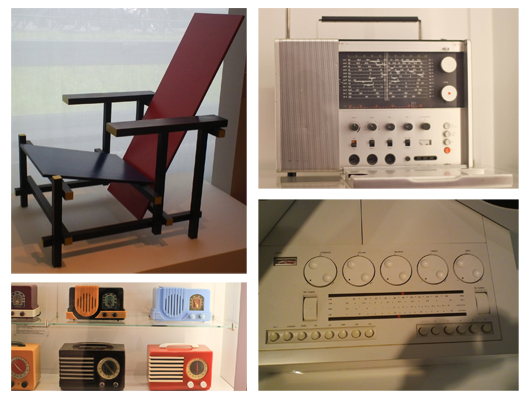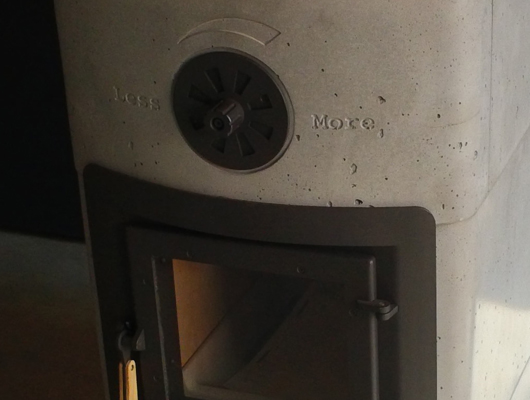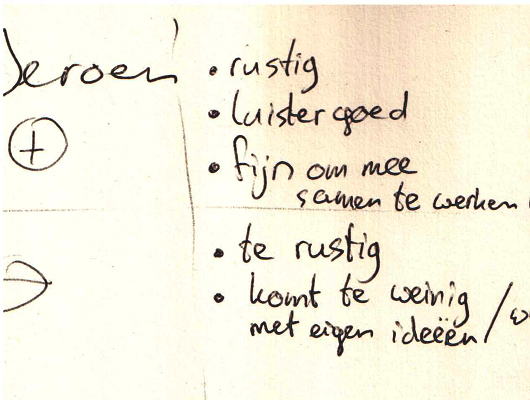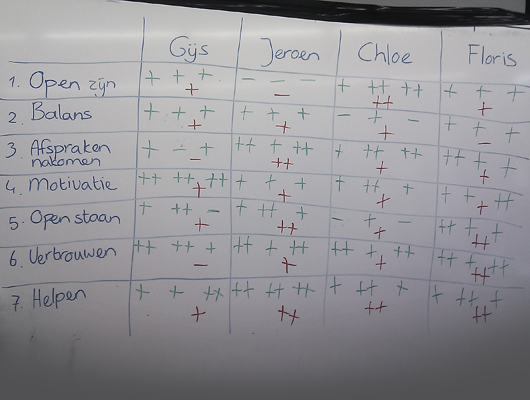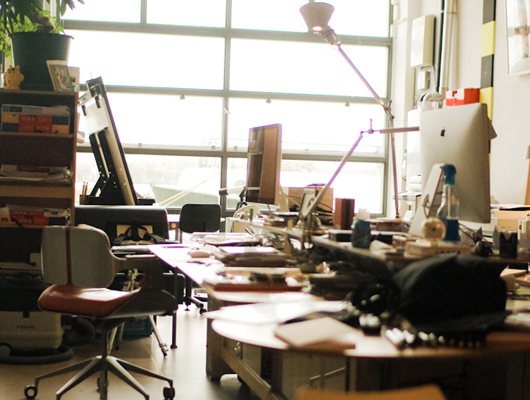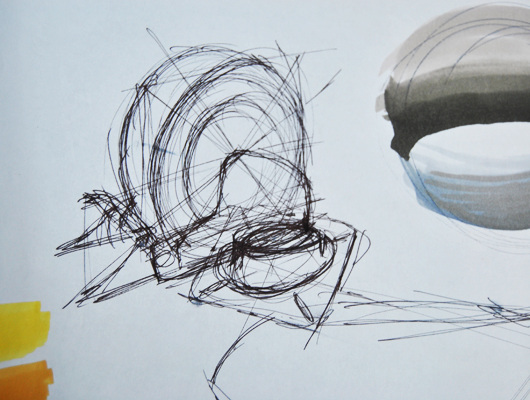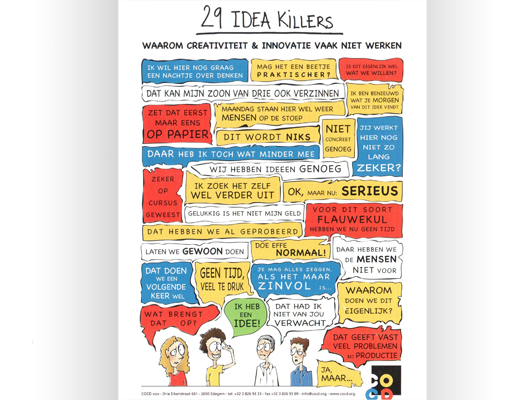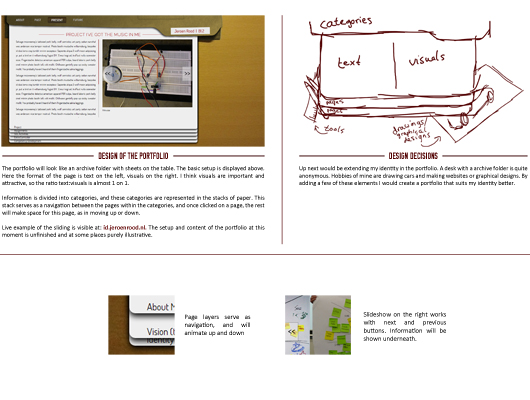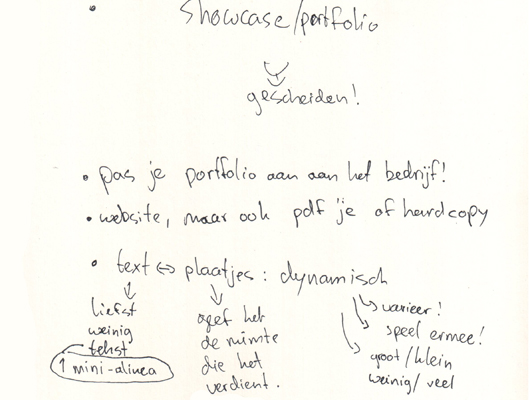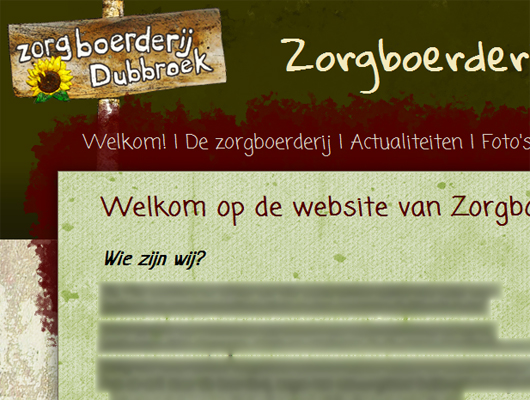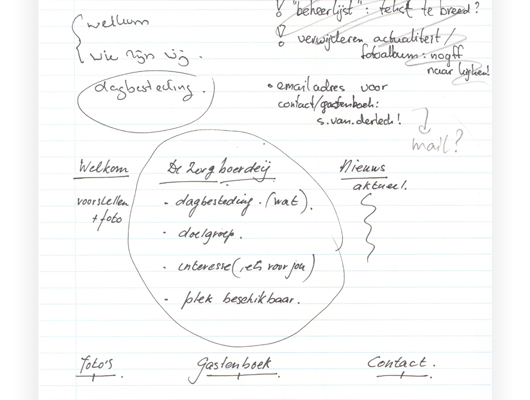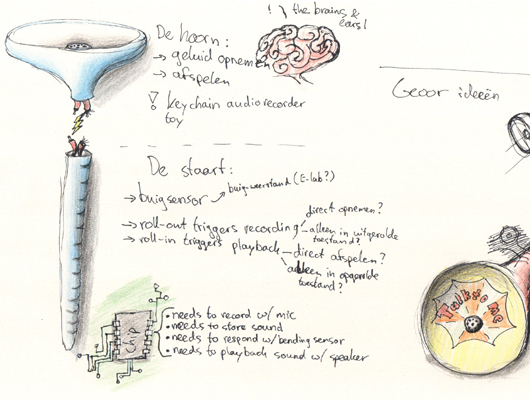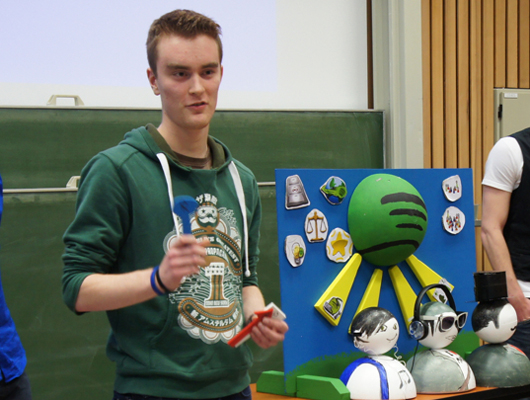Project I've Got The Music In Me
This project was done in collaboration with de Klankspeeltuin. We had to design a cheap handout for them to make the children who visited them engaged with de Klankspeeltuin. Besides, the concept had to suit their corporate identity.
During the first part of the project, I learned a lot when it comes to coordinating research. Where to go, what relevant information to search for or where to get inspiration for the project. As a team we went to different places like MIM (the Musical Instrument Museum in Brussels) and to primary school the Driestam, to do a user survey. We did a lot of relevant research for finding inspiration in the idea generation, like the aforementioned visits. But we also searched for cheap sound-producing devices and disassembled them to find out what they are made of.
Together with the team, I iterated the idea generation process a couple of times. This partly involved the research, but also involved brainstorming and mind mapping.
After the idea generation, we chose some ideas to display at the Midterm Exhibition. After the exhibition, we all chose one idea to elaborate on. The idea I chose was "Ge-Oor", a rolling-up recording device. During the design process, I also did a lot of shape studies, with which I explored different design problems. For example how I could improve the rolling-up and how I could make it in such a way that the children could assemble it themselves, without any glue. Next to that, it also helped me in making the decision on what material I could use.
I also thought of the possible technique behind it, which is also described in the report. I was building a prototype, but I couldn't get it to work. It was present at the Final Exhibition, but I really wanted to make a working prototype. I did this by means of modifying a sound-recording chip found in greeting cards. This reproduced the sound one could record, but the user would not have a great influence on the sound being played back. Next to that functioning prototype, I also found a sound manipulating chip, an ISD1620 memory chip (EEPROM), connected to a microphone, speaker and a pot-meter for adjusting the playback speed. With this device, it is also possible to adjust the pitch. When it comes to sound manipulation, such chips can be imported from China for about 10 to 20 cents each.[1]
The overall feedback I got from my coach is that I developed the competency areas well, but this development is not implemented in the design process I went through. The start as a team was good and useful, but the individual part was in terms of the research processes only mediocre. According to my coach, I handled a bit reluctant when it comes to acting in a research process. I didn't explore many fields simultaneously, and let some fields of research slip in order to stick to just one of them. I think that is due to the fact that I am not that assertive, because I should have taken some decisions earlier and I should have contacted some experts on the technical part earlier in the design process. Besides, my coach mentions that I seem to have difficulties to step out of my comfort zone, to try new things. I think I need to consider steps to take in a design process more actively instead of following a straight line, which I did during this semester as I look back to it now.
[1] = Alibaba.com : a search result for the sound manipulation chip ISD1620, as an example. (new window)
Click here to download the project report. (opens in a new window)
Click here to view the project feedback. (opens in a new window)
Assignments
 DG412: Intercultural Awareness
DG412: Intercultural AwarenessDuring this assignment I got a feeling for cultural differences but moreover I learned that these differences are only relative. How these differences are described is always with a certain point of view. Namely, a cultural one. And what I learned about cultures is that not a single culture is neutral, or "the best". Every culture is biased.
This awareness is great and also very useful in daily life. I come across situations now where I find myself understanding the conflict better than others, as I can relate it with the cultural dimensions from Geert Hofstede. Combined with the workshop "Creatief Denken", I learned to think different.
Having read a book about different cultural mindsets, having presented about one of the chapters in the book leading to discussions and having taken an interview which I analyzed with Tommie Perenboom (my team member for that assignment) afterwards, I think it was really effective when it comes to learning about the competency area Socio-cultural Awareness. Analyzing the interview and connecting different parts of the conversation with the theory of Geert Hofstede, I think I learned the most of how to apply the intercultural awareness in everyday life.
The assignor gave me some advice in the feedback she gave me. Although she thought I did a good job in developing myself regarding this competency area, I would still need to develop my reflections. The way I wrote them for this assignment is according to her not a way of writing a reflection, although she thinks I reached the right in-depth writing in the end of the reflection. Her advice was to look at others' reflections and try to adjust my writing style to that.
Click here to download the assignment weekly reflections. (pdf, new window)
Click here to view the assignment feedback. (new window)
 DG220: Introducing Electronics
DG220: Introducing Electronics
My goal for this assignment was to get some more grips on dealing with electronics. Besides, I wanted to develop myself in the competency area 'Integrating Technology'. Since I did not do anything with electronics last semester, I wanted to implement it this semester. To be honest, the assignment was better than expected. The work was not just theoretical, but also practical. I think this helped me a lot. Making the theoretical exercises was great to practice some theory as well as to practice doing some calculations. But if it had been just these exercises, I would have missed a great deal of insight. I would never have gotten grips on dealing with electronics if there had not been any practical assignments.
But thanks to the assignment I now feel like I can handle electronics, and it is not magic anymore. I now also know how to choose components and what these components do. It is great to look up how other people make the circuit, but it is even better to understand for yourself how it is done.
I can say this assignment was a challenge for me. The exercises were harder than I expected, but thanks to the physics classes not so long ago on secondary school most of the theory was pretty understandable. One thing I was struggling with was to understand how transistors and opamps work. In the end, I found out by means of the practical assignments.
The feedback I got was quite positive. The assignor had the impression that I was eager to learn and showed some decent understanding of the basic electronics. Besides, what came as a surprise to me, he mentioned substantial growth in Mathematical and Descriptive Modeling. Because of the modeling of electrical circuits and the ability of verifying and understanding circuits contributed to this competency according to him.
Click here to download the assignment report. (pdf, new window)
Click here to view the assignment feedback. (opens in new window)
 DG512: Business Modeling
DG512: Business Modeling
The first quartile I attended the assignment Business Modeling. Initially, I thought it would be all about the competency area "Designing Business Processes". But since this competency has close relationship with others and since it is part of the design process, this is obviously not true. Designing Business Processes could be done according to the Business Model Canvas and the Empathy Map. The extent of design-thinking in designing business models is really high.
During the assignment, I learned to work with the Business Model Canvas and the Empathy Map. I found out these are very useful when making business models in a design-ish way. While using these guidelines during the assignment, I found out there are multiple ways of making a business model, even with the canvas. One could start from the Value Proposition that one can offer, one could start from the customer because there is a gap in the market for a certain segment or you have a product that suits this segment. For the last approach we learned to work with the Empathy Map as well. Mapping the customer, their daily activities, gains and pains, needs and feelings or close environment could help in making the product "perfect for that customer".
Another thing that we iterated a lot, is presenting the business model. The assignment was to present the model in a tangible (and more exciting) way. Each week we had to work out more building blocks of the Business Model Canvas and we had to improve the quality of the tangible designs. During the presentations we learned that making a presentation tangible can make strengthen the story or add extra clarity to the story. It can also contribute in a positive first impression. This is also very important, as it makes or breaks your model or presentation. I think both Ideas and Concepts and Form and Senses played a big part here, as we had to come up with tangible models. Teamwork and Communication played a part too, as for presenting we learned to work on presenting more qualitative.
Where I got positive feedback on my growth, the assignor advises me to take more space in the group. In her opinion though, it's not really that bad. Not everyone can be a front man.
Click here to view the feedback on the assignment. (opens in new window)
Click here to download the Prezi-format Report. (zip, new window).
SDL Activities

On Wednesday the 28th of March, Lucid organized the Mystery City Trip to Köln. During this trip we visited the Design Post, an open exhibition and conference space for designers. We also visited the MAKK, a museum for art and design.
From this trip I mainly found inspiration. Seeing these design products from contemporary designers, but also the design products from designers of the past was very inspiring. It was cool to see how innovative shapes or constructions nowadays are applied to existing products, or how the basis of every type of that product is captured in one specific design. The use of unexpected materials was inspiring as well. For some products I had a certain 'stereotype' material in mind, which totally opposed what I saw there. For example a lamp hood was not just made out of paper, but was folded into shape with a kind of origami. Something I had a mixed opinion about was a carpet which, because of the light material and the pressure of stepping onto it, bulged up around you. It felt like walking on a weak waterbed. This was an amazing effect, but the looks weren't coordinated very well in my opinion. The texture looked cool, like weathered concrete, but for some reason there were little bushes attached to the carpet that didn't suit in my opinion.
All in all it has been an inspiring trip, where I gained some insight in the design world from now as well as the design world from the past.
 Workshop "Group Dynamics & Peer Review"
Workshop "Group Dynamics & Peer Review"
The 29th of March the project group had a workshop about group dynamics and peer review. It was the last session, which was mostly about peer review. We had to discuss the group-criteria and in what extent each team member met these criteria.
I learned something new about my attitude. I knew already I am a bit insecure, which I am working on all the time. But what I didn't realize before, is that being quiet inside the group is not only caused by this insecurity. I also happen to let the conversation roll, just being an attendant and not a participant. I think that's why I also have a hard time expressing my opinion. Since this workshop I paid attention to these critical points and I worked on it. I just don't want to be that insecure team member that lives in his own world. It's okay to some extent, but I don't feel comfortable with it. I want to step over this barrier and become more assertive. The trainer mentioned other personal development trainings, among which there also is an assertiveness training.
 Practicing sketching / coach designer studio visit
Practicing sketching / coach designer studio visit
Before the SDL-week, my coach handed my project team a CD with sketching tutorials. He also invited us to his designer studio. I copied these sketching tutorials from the CD and started practicing some sketching by following the videos. What I noticed, was that the way of sketching differed a lot from the way I drew. I was basically drawing one sight of the object, whereas with this sketching technique I would be able to sketch objects which are also perspective-wise correctly. While not having practiced a lot, I still see how this technique improves my overall drawing quality.
On Friday the 30th of March I went to my coach' design studio along with my team. It was nice to see how an actual designer works on projects. But I think that's different for all the designers. My last coach worked for a design agency with colleagues, where my current coach works independently and has his own studio.
That day my coach also gave a little sketching workshop, where I worked with markers for the first time. The end result actually looks pretty good, and can easily be given a sense of speed. The markers are the finishing touch, a way to create depth and to give the object a texture. Combined with the sketching technique, this makes sketches look more qualitative. And it still is a fast process, but the result looks way better than when I would draw these objects with my old technique.
Extra Curricular

On the 7th of March 2012 I went to the lecture "The End Of Capitalism?". In this lecture the potential end of capitalism was discussed. The speaker, dr. Paul Jorion, explained how the economic crisis started and why it is the end of capitalism.
According to dr. Jorion, capitalism is about wealth. This wealth gives a false sense of security, which sparks speculation. This means that companies lend or borrow virtual money to acquire new things. This money has to be paid back, but the company does not have this money since this company borrowed it in the first place. Resulting in debts and more loans, this money is needed desperately whilst not being there. Debts grow, while nobody is able to pay it back. The need to expand requires even more money, which results in more debts. That is where the crisis begins.
This is a problem that needs to be solved, but it requires rethinking the current economic model. It means the society of today must step away from the capitalism. That automatically means the end of it. My conclusion on this lecture is that if there is something wrong within the system it could also be the system itself. Solving problems (and design problems) sometimes means you have to change the system radically.
 Lecture "Paradoxical China"
Lecture "Paradoxical China"
This lecture, on the 14th of March 2012, is about the opinions and views on China that make its position in the world paradoxical. According to professor doctor engineer Peter Ho this is based on the way we perceive China. Our perception has two sides: euphoria and fear.
The people who perceive China with euphoria tend to think China is our savior when it comes to economic crisis. They think China is resourceful, but in the same position as we are. Helping us would save China as well in their opinion. Another thought is that China wants more voting power, which it would get by helping us. According to the speaker, China will already get that. He also said that China wants a good investment. Trading resources for more voting power while already getting voting power won't do it. There are also people who fear the growth of China or any collaborations with China. This is because they are prejudiced about China. They tend to have a negative esteem of this country. It is thought that China is in a different phase of development and thus will end up in an economic crisis as well. But China is a different nation with different needs. If leading the EU would be steering a small vessel, than leading China would be steering an enormous oil tanker.
The speaker concluded that China is developing differently than Europe, and the situation in China is not as bad as it looks. Furthermore, the high expectations and wishes are misplaced. I think this lecture was really inspiring, combined with the lecture "The End of Capitalism?". I think it's amazing China is so big and still doesn't end up in a crisis, where we think they do. I think we can learn from China in the way the nation is led.
 Workshop "Creatief denken"
Workshop "Creatief denken"
On the 24th of April and the 8th of May I attended the workshop "Creatief Denken". This workshop was about the methodology behind creative thinking, and what defines it. There were also shared some tips to make creative thinking easier. These were the following:
- Look for alternatives, never use the word "but" to throw away an idea. Always use "and what about this?" as it will have a more positive attitude, and could help the others.
- Delay your judgment. Don't just shout out your opinion about something in an instant. This will kill the creative process, either with a negative feeling or with a feeling one should pick up the "good idea".
- Observe sharply, as the more details you see, the more inspiration you'll find. It will also train you to look around in a different way, with a different perspective.
- Associate things. Relate things, make "crazy" combinations. This might bring you to better ideas.
- Use your imagination. By means of fantasizing and the curiosity to see new things. To explore the unknown. Creativity can be sparked by coincidences or weird fantasies.
Next to that, the creative process was covered. It consisted out of four parts: Clarification, Ideation, Elimination and Implementation. Clarification is defining the problem or the main question to be answered. The ideation is an explosion of ideas, research and elaboration. Here it's important to have no boundaries. The elimination is defined by choosing ideas to elaborate on even further, or to question whether or not an idea is relevant. The implementation is the final stage, where the idea is elaborated and worked out to a final product/result/answer.
This methodology of the creative process was quite recognizable for me. Although it was giving me some more insight on the design process in general. Where I vaguely knew how to take steps in the design process before, I now see the bits and pieces coming together.
The second session continued with the creative process. Moreover, we had to put the theory into practice with exercises. There were some interesting exercises that spark creativity, and some exercises to show by what means the creative process can be enhanced. Comparing the problem with animals or aspects of animals. Or splitting up the problem in key words, associating that with aspects and combining those again.
I can really say this changed my view on everything. Creative thinking is not just triggered with certain activities, it is an attitude. One needs to switch it off again sometimes, but mostly it's very handy. This workshop really opened my eyes when it comes to looking past the cognition, past what's already there. In my opinion that's the start of creativity.
 vanBerlo Portfolio Day
vanBerlo Portfolio Day
On Wednesday the 9th of May I attended the vanBerlo Portfolio Day. That day was about portfolios. We had to show our (drafts) of portfolios, and accompanied by professional designers the portfolios were reviewed and given feedback on.
My portfolio was an alternation of my showcase. I have to say that beforehand I had some wrong expectations. I didn't really know how a portfolio should look like. Only already in that perspective this day was really fruitful, as I learned how to build a professional portfolio. I learned that a website is good, but having a pdf-file or a hard-copy portfolio would leave a better impression. Another advantage of this is that this is more waterproof. A website can break down or be temporarily be unavailable.
I also learned a couple of do's and don'ts that are considered as important to what needs to be in your portfolio or not. I learned that a portfolio is about your skills, and should be easy to read, likely in a couple of minutes. The visualizations should be clearly visible and descriptive about the skills you want to show.
Next to that, we were also guided through the design studio, and were invited for a drink afterwards as well. From that, I learned some tips and tricks as well as gained some insights into being a designer in an agency. Compared to working independently, there are more sections of which you can depend. I found out that working independently results in assignments with a wider spectrum of activities than when you work in an agency.
The Portfolio Day was quite a great experience. This once again proved that this profession is what I want to go for!
 Web Design
Web Design
As a hobby of mine which grew out to a actual business, I build websites. I can now relate this to a creative process, although I built them more intuitively than I reflected upon them. But still I went through a creative process. When I start to think about it, I took some things into account I would take into account in a design process as well. I would do research for context, create ideas about the appearance of the website, I would show some mid-way results to my clients in order to get some feedback on what I made so far and I would decipher the client's needs. So far, I had clients with clear views on what they wanted, although one of them was less experienced in website-talk, which required some pondering on what the website had to look like on the outside, as well as what the client wanted the website to do. When that was clear, I also had to make a structure of the website as well as the functional part.
Besides, I always build the websites in such a way that they are easy to maintain. My goal is to build websites which the clients can maintain themselves. That, too, needs to fit the client's requirements. This maintenance system (also known as "Content Management System") almost always goes through a path of trail and error. So when the website goes online, there always is communication back to me from the client or the user. They always give me feedback on what they like about the website as well as what they think that could be improved.
 Dunlop Livery Competition
Dunlop Livery Competition
This year I once again participated in the Dunlop Livery Competition. This time, I made a design with a little philosophy. Dunlop is a tire-brand, and they promote themselves with being the best when it comes to grip tires. I made use of that by integrating that in the design. It looks like the body work of the car is torn open, and underneath shows tire tracks. So, the car on the inside is all Dunlop.
This year I didn't win, but it still was exciting to participate. It was nice to see the competition grew more popular compared to last year. This makes it not just more of a challenge, you also see more variety in the contestants' entries.
Here my entry of the competition can be found.
Competency Development
Overall Growth
I think I reached an overall level of awareness for most of the competencies. An exception is Descriptive Mathematical Modeling. Next semester, I want to do an assignment with this. If I didn't cover it in the context of the project, I still did assignments or extra-curricular work to find out more on the different competency areas. I linked different activities to different competency areas.
Self-Directed and Continuous Learning
Where last semester I mentioned that to be a designer is to be eager to learn new things, I still think this is true. The world around you is not standing still, so as a designer you need to be flexible. But I do think I changed in the way I pick up theories and use things I learned. I can say now, that I actively apply things I learned instead of learn them by heart. For example, when I had the two sessions of "Creatief Denken"and finished the assignment "Intercultural Awareness", the things I learned contributed in a whole different attitude and mindset. But this competency is also about knowing how I learn. I learn by studying theory, but I also need practical exercise to gain full insight in what I learned. Next to that, this competency is also about being able to plan your own way of studying, about being able to choose your own path when studying. I think I feel more secure about that now. This semester I chose some assignments successfully, keeping most of the competencies balanced.
I think the activities with respect to this competency area are linked to Exploring validating in context and Thinking: analyzing abstracting. I set out a path where I wanted to be by the end of the semester, and that was gaining more awareness over Designing Business Processes, Integrating Technology and Socio-Cultural Awareness. I succeeded in this, so I think I found the right way of planning my study path.
Form and Senses
This semester I made sketches on how the concept would look like, as well as made paper and poly-propylene models to get an idea of the actual shape. In the different assignments I participated in, there was also some form and senses involved. I had to create a tangible business model, for example. But Form and Senses is also about how and what the shape communicates with the user. The concept of my project for example has a rolling tail. This is the only way of interacting with the device. This interaction lets you playback sounds. So the shape of the tail has a function, namely letting the user play with the device.
I would say that my activities concerning this competency area suit Making: synthesizing concretizing the best. I based the models I made on ideas I formed during the process. These ideas were altered after I built models, so I shaped my ideas along with the models.
Ideas and Concepts
This semester I iterated the ideation process a couple of times. The first time it was just brainstorming, but later on I also involved doing contextual research as a form of inspiration. I also developed a vision on what the product had to be, what criteria it had to fulfill because of this contextual research. I think over here the workshop "Creatief Denken" was useful as well. It put me in a completely different mindset. I found out how to think creatively, question the obvious, and come up with innovative ideas. Next to that, sketching and making models helped in strengthening the concept for myself.
This competency area suits the drive Envisioning transforming society. Since this competency area is about creating a vision on a design problem, and finding a solution on how to solve it, this drive suits the best.
User Focus and Perspective
Together with Designing Business Processes and Socio-cultural Awareness, this competency area is about gaining empathy with the user or customer. It is also about finding out what the target group wants and what these users are capable of. Doing a user survey during the research we did as a team, each of us created a vision on what the users (in this case 9- to 12-year-olds) like and are capable of. Next to that, some decisions in the interaction were handled speculatively. For example the difference between recording and playing back sounds with the project concept. The entire tail manipulates the played back sound, and only when the tail is fully stretched the device will record sounds. There has to be a distinction between the two, which has been made by a clicking spring metal sheet. Besides having worked on it in the project, I also gained more experience with the competency during the assignment "Business Modeling", where I made an empathy map in order to engage better with the customer.
Here the design process activity that suits the activities this semester the best is Exploring Validating in context, as I created a view on what the users are capable of and what they like the best. I integrated that in my shape study iterations as well as the generation of the idea itself.
Socio-Cultural Awareness
This competency area is about the awareness of the variety of cultures. In my reflection for the assignment "Intercultural Awareness" I stepped away from calling it differences, as this stresses the comparison with one's own culture in my opinion. With this comparison, it's mostly the case that one's own culture is regarded as the most neutral. And this is not the case. I found out that all cultures are biased. And in order to get the most out of collaboration with another culture, one should adapt to it. "They" are not different from you, you are different to "them". Having attended the workshop "Creatief Denken", I found that this helped me a lot in thinking different. This way of thinking is a different attitude, and I found myself understanding difficult conflicts better.
Thinking: analyzing and abstracting suits the best for what I learned here. I learned to evaluate situations and problems by looking at it from different viewpoints.
Integrating Technology
For this competency area I did an assignment, namely "Introducing Electronics". Because of this assignment, I iterated the theoretical as well as the practical part of the assignment a couple of times, which helped me in getting some grips in electronics. Besides, for the project I had to take into account that the product had to be cheap. This lead to research for cheap electronics, and what is possible with cheap technology. Until the final exhibition, the attempts to build something with functioning technology failed, and not until after the final exhibition I picked up the research again. This finally resulted in a product with specific technology behind it. After doing research, I found that this technology can be very cheap, which suits the objective of de Klankspeeltuin.
To be honest, for most of the project the activities for this competency area cover Thinking; analyzing abstracting. Most of the work on the technology was speculative although I did some attempts to build something. To place the activities of this semester in the activities of a design process is somewhat hard for this competency area, as I did various things to a limited extent. However, the assignment helped me in getting to know electronics, as I did a lot in Exploring validating in context and Making: synthesizing concretizing.
Descriptive and Mathematical Modeling
Concerning project work or assignment work this semester, I did not do a lot for this competency area. Reading the description, Descriptive and Mathematical Modeling is not just about doing math. It is also about figuring out the project brief or about describing the interaction a product has to support under certain circumstances, making it intelligent.
After reading this description, I found that I did do some work for this. A hobby as well as a paid job of mine is making websites, along with the so-called "Content Management System" behind it. This system needs to be easy-to-use, as well as fulfill the users' needs and make the website more flexible. Finding out how to build it in the most logical way requires quite some engineering. Besides, not all websites I made required the same content to be managed, or possibly required the content to be managed in a different way.
Regarding this competency, I did a lot when it comes to the activity Making: synthesizing concretizing. I made a descriptive model of what the website needed to be like and started building the website on this model.
Designing Business Processes
One thing I learned is that this competency area is not just an addition to the end of the design process, it is a part of the design process. You always think about business. Whether it is feasibility, the unique selling point, the user relationship or the cost structure. It's not just a part you spend time with at the end of the process, it is fully integrated in each step of the process. Collecting and writing down these thoughts could in my opinion result in a standalone business model (although it requires some real business modeling to finish the model). Just like Socio-cultural Awareness, it is very engaged with different parties, where the customer or the user is in a central position. Although with business models it can also be the value proposition or the key partners which can be central.
This competency suits Envisioning, Transforming Society. Since I learned to make business models for a certain context, it is creating a vision or a decision plan based on existing problems or issues.
Design and Research Processes
As a start, we did research on the context of the project. This was needed to gain some more information as well as inspiration for the ideation. This semester I did a lot when it comes to shape studies, and this required finding out what material suits the best, and where this material can be bought the cheapest or what the price is per model. This is research as well, but only on a smaller scale. When used and documented properly all the small pieces of research contribute to a better overview of what has been done and what still has to be done. Last semester, B1.1, was a good example of that, as we stuck many findings to the wall. We also did that this semester, but we laid the findings out differently, making it work for presentation purposes as well.
When it comes to user research or technology research, I didn't do a lot for that. As a feedback from my coach I got was that the research process for me was not well-divided. I mostly did shape studies, but didn't leave room for other research areas like user research or technology research. The feedback was a wake-up-call to me when it comes to my attitude. I still have to work a lot on my attitude regarding being pro-active in the research process.
Considering the activities done this semester, this competency area can be connected to all of the design process activities. As a team, we started doing research and defining our vision on the project. That belongs to Exploring validating in context and Envisioning transforming society. Later on, I started building models, producing ideas, reshaping ideas and looking back to the objective and the vision, correcting the ideas again. This suits Making: synthesizing concretizing and thinking: analyzing abstracting.
Teamwork and Communication
This semester the teamwork went a lot better than last semester. I think all the team members contributed to this. At the start I still showed some insecurity, but soon enough I realized that when I was a little bolder, a little more assertive, it would be fine as well. And it worked. I am not new to this, and I would rather get rid of this insecurity. But I am steadily improving my assertiveness.
Thanks to the workshop "Group Dynamics and Peer Review" I found out a second cause for my drawn-back personality. The trainer suggested when the team members were reviewing each other that It would not be just the insecurity, but that I also might have a tendency to be more of an attendant than a participant of the conversation. I think this doesn't help either. During the semester I started paying attention to this as well, and I started to be more engaged in the conversations which helped a lot. Compared to last semester, I improved on my teamwork skills and on being more assertive. But I still think I can work on my assertiveness, so the next thing to do is registering for an assertiveness training.
Besides, I had to present a lot during the assignment "Business Modeling". I learned that presenting with tangible models helps to spark imagination, and thus bring across the message easier.
The work I've done for this competency this semester can be related to Thinking: analyzing abstracting. That is because I did a lot of self-reflection on my attitude. I wanted to find the "error" which made me so drawn-back even though I was able to tackle it to some extent. Now I found it, I was able to work on it. But the next step is to keep it that way and even improve on my attitude.
 = Past development
= Past development
 = Current development
= Current development
